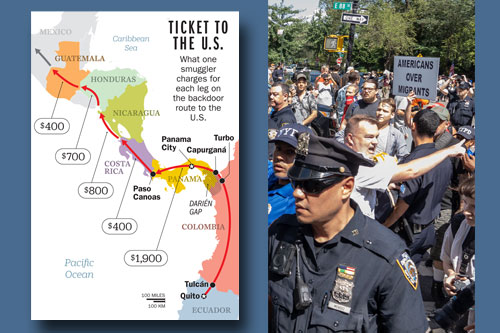by Scott Winship
On this day in which the subject of the netroots is dominating the news cycle, I thought I’d review Jerome Armstrong’s and Markos Moulitsas Zuniga’s Crashing the Gate, which I finally finished. And you netrooters may be pleasantly surprised.
Crashing the Gate is essentially a guide to the New Politics. For those who are not deeply embedded in the netroots culture, the book is the best single source of information on the new political players, the institutions-in-making, and the philosophy of the New Politics, which includes the netroots but also renegade unions like the Service Employees Industrial Union, think tanks such as NDN, and progressive venture capitalists like Andy and Deborah Rappaport. Armstrong and Moulitsas clearly have a big-picture understanding of how these pieces are connected, and their description is informed by interviews with participants all over the country.
One might have thought that bloggers, whose posts typically range from a few words to a couple thousand words, would have difficulty translating their thoughts to a format requiring 200 pages. But Crashing the Gate is a very enjoyable and quick read. The only deficiencies I saw involved the beginning and ends of the book. The introduction isn’t worth the time of those who follow political news regularly, beginning with a conventional overview of the conservative coalition before switching gears to set up the rest of the book’s critique of the Democratic Party and its affiliated institutions. The concluding chapter, which lays out the New Politics agenda now that they are “inside the gates”, feels incomplete.
But in between is a trenchant – if sometimes overly cynical and one-sided – appraisal of the Democratic establishment. The chapters of the book take on: single-interest advocacy groups whose short-sightedness leads them to sometimes back Republicans or refuse to support Democrats, D.C. consultants who face no accountability and have not evolved over time to embrace new realities, foundations and institutional donors who shy away from building a Vast Left-Wing Conspiracy, the Democratic Leadership Council and establishment figures who worked to undermine Howard Dean’s presidential campaign, and Party congressional committees for abandoning red-state candidates and pressuring candidates into hiring ineffective consultants and pollsters.
Much of the middle of the book is devoted to contrasting how Democrats have campaigned and developed over time to Republican approaches. The chapter on consultants shows how far ahead the GOP is when it comes to targeting voters using sophisticated databases, relying on new media for advertising, creating memorable ads that strike an emotional chord, and even the hiring and payment of consultants. The chapter on infrastructure provides both an overview of Republican institutions and a revealing look at how Democrats are trying to copy them.
Armstrong and Moulitsas recount the rise of the netroots, from the McCain-Feingold campaign finance reform bill that shifted power away from the establishment, to the Dean insurgency, and through the 2005 contest for the Democratic National Committee chairmanship and beyond. And the final chapter is a concise summary of “what the netroots wants”.
Crashing the Gate isn’t without problems. Most obviously, it essentially blames the poor electoral performance of Democrats on everything except for their policies and agenda. In Armstrong’s and Moulitsas’s world, public opinion matters little. Think tanks are needed to come up with attractive ideas, and a message machine is necessary to promote them, but it is as if they believe there are simply good ideas out there and the Republicans have just been better at extracting and promulgating them. And the emphasis on tactics and campaign strategy also relegates ideas to a secondary concern.
Armstrong and Moulitsas are also unnecessarily critical of the motives of establishment figures in places. In their telling, no one in the establishment can just be incompetent or ineffective, they must be corrupt or lazy. The consultants and pollsters come in for particularly harsh treatment, even if some of it – for some of those tarred – may be justified. Indeed, the prevailing attitude is that once inside the gates, the establishment must be overthrown entirely. A separatist strain surfaces here and there throughout the book, with intimations that one of the things the netroots wants is to build an entirely parallel set of institutions.
Whether this set of institutions would become the party, supplant it, or counterproductively sit alongside it is a vital question, perhaps one we should all keep asking as the netroots continue to assert themselves as a power center. If the netroots really aren’t ideological, then the party can’t help but benefit from the more effective strategies, tactics, and institutions of the New Politics. But if it is ideological, then party institutions may end up fragmented and divided. The netroots have crashed the gate – it remains to be seen what they will do from here.








